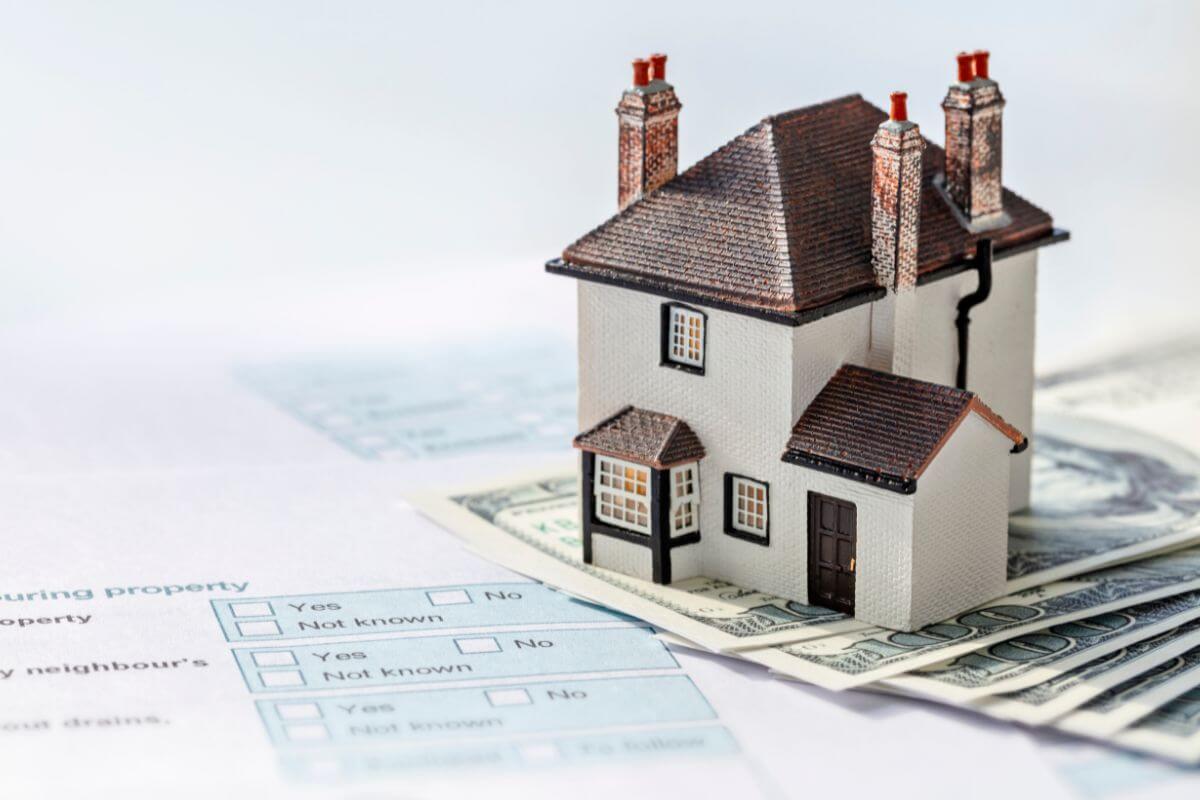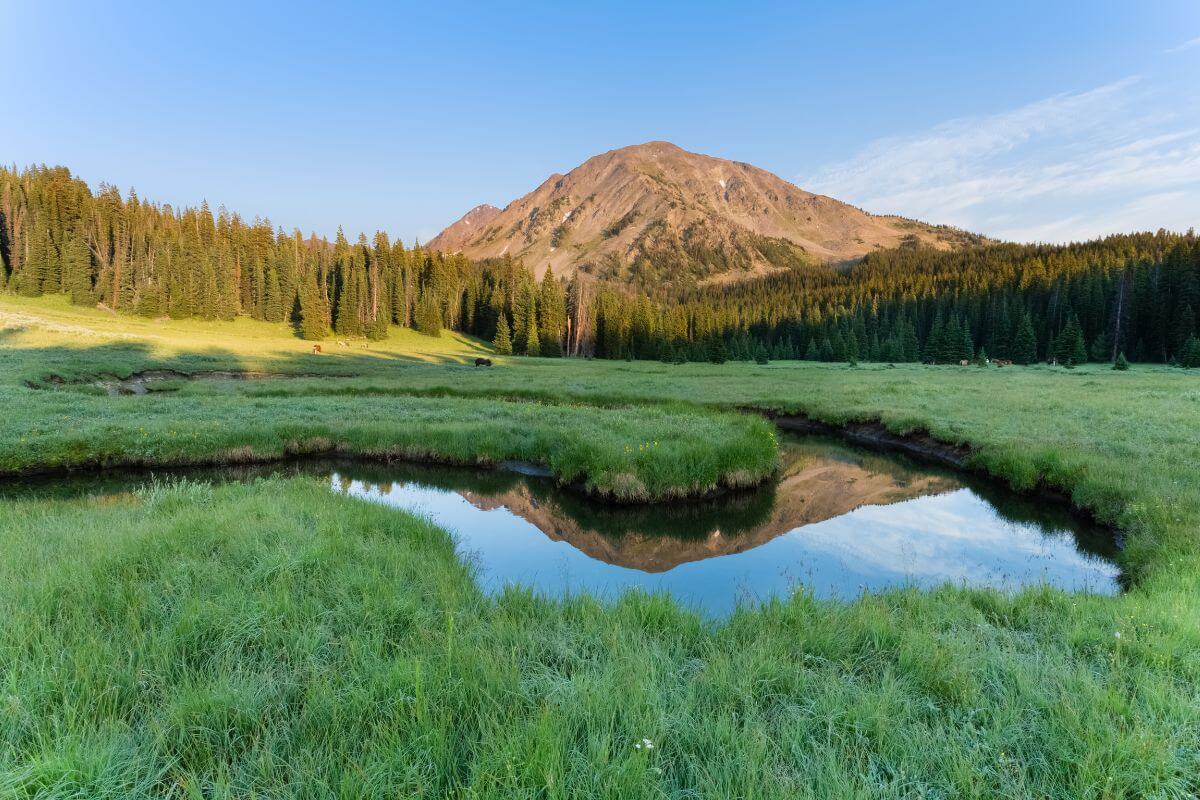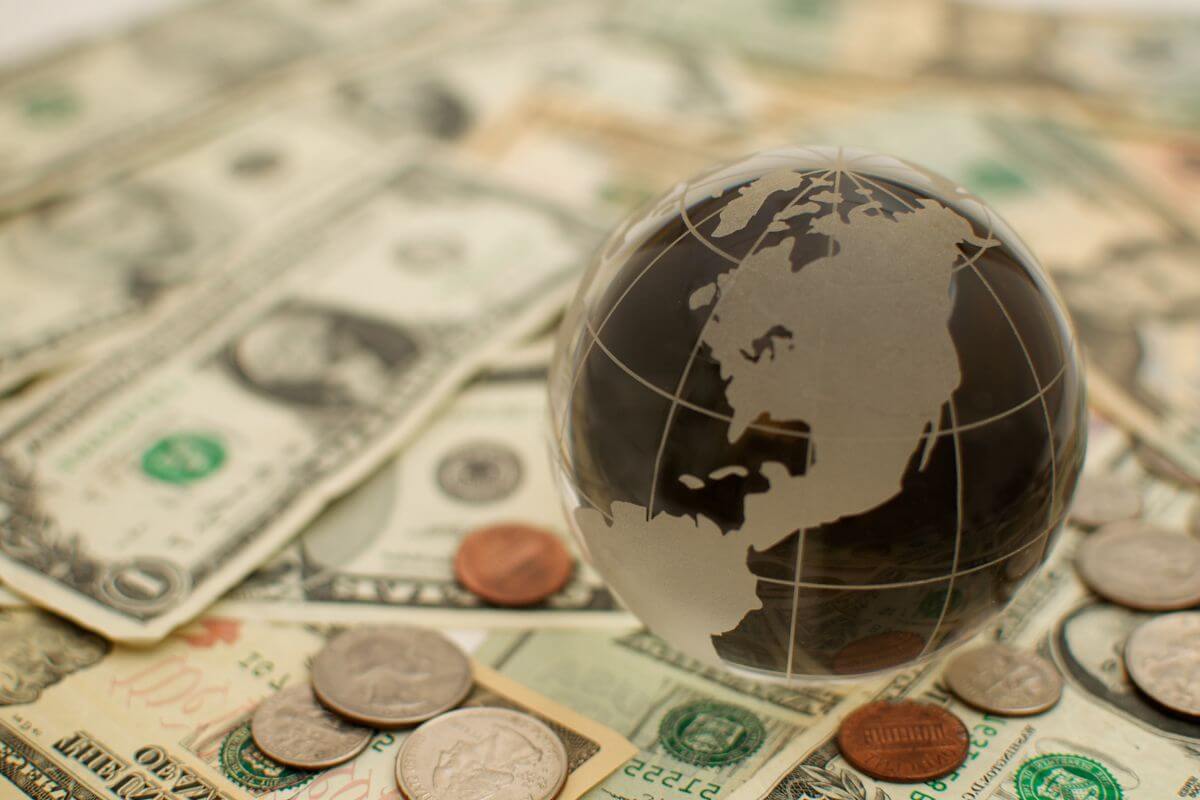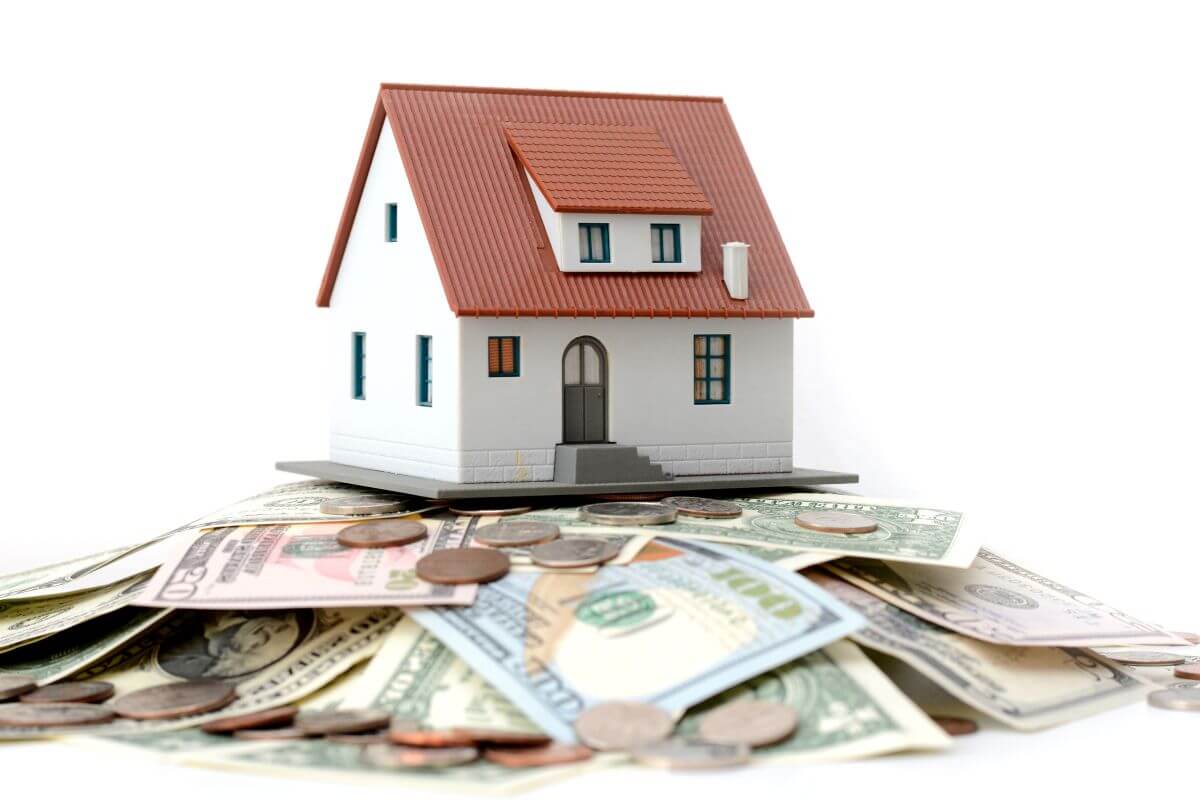Are you curious about the cost of living in Montana?
Wondering why this seemingly idyllic state comes with a hefty price tag?
In this article, we’ll unravel the mystery behind Montana’s expensive reputation and shed light on the factors contributing to its higher-than-average housing costs.
- Related article: What’s Montana like
Whether you’re a single adult looking for a preferred lifestyle or a family seeking to settle down amid nature’s bounty, join us as we explore the reasons why Montana is worth every penny.
Let’s embark on this journey together, shall we? Buckle up and let the exploration begin!
Montana’s Cost of Living: A General Overview

In this section, we’ll dive into the numbers and get a general overview of what it really costs to call this beautiful state home according to SoFi.
| Category | Cost (Annually/Monthly) |
| Cost of Living (Average) | $47,887 |
| Housing (Range) | $614 – $1,681 (Monthly) |
| Basic Utilities | $297 (Monthly) |
| Grocery/Food | $331 (Monthly) per person |
| Transportation (Range) | $5,316 – $15,073 (Annually) |
| Healthcare | $8,289 (Annually) |
| Childcare (Range) | $775 – $1,075 (Monthly) |
| Marginal Tax Rate | 6.75% |
| Personal Expenditure | $26,532 (Annually) |
- Learn more about Living Expenses in Montana
Expensive Montana: Housing Market Inflation

Montana’s housing expenses have been steadily increasing since the 1990s.
According to Trading Economics, the House Price Index for the state has more than tripled since the year 2000.
During the 1990s, the average cost of homes increased at an annual rate of 7.1%. However, the growth slowed down due to the 2008 global financial crisis.
Since then, housing prices in Montana have been steadily rising at an average rate of 4.1% every year.
But why is this happening, and how does it impact the overall cost of living in the state?
Montana’s Housing Market: What’s Driving Prices Up?

From heightened demand and restricted supply to the state’s attractiveness and the pandemic’s effects, multiple factors are driving up prices in Montana’s housing market.
Let’s take a closer look at each.
1. Montana’s Natural Beauty

One of the main drivers of Montana’s high housing demand is its natural beauty.
The state’s scenic landscapes are a magnet for people all over the world who are seeking a serene and picturesque place to call home.
With stunning attractions featuring Yellowstone National Park, Glacier National Park, Whitefish Mountain Resort, Big Sky Resort, and Whitefish Lake, it offers limitless opportunities for thrilling adventures.
It also provides a haven for those seeking peaceful moments of meditation and self-reflection.
If you’re looking for a blend of city and country living, Bozeman, Montana may be the perfect choice.
This charming college town has a welcoming atmosphere and a downtown area teeming with amenities.
From vibrant restaurants and shops to cultural events and outdoor activities, Bozeman offers a little something for everyone.
Montana’s natural beauty isn’t just a treat for the eyes; it also offers countless recreational opportunities.
The state’s high housing demand arises from the allure of living amid extraordinary natural beauty. How could anyone resist such a lifestyle?
2. Montana’s COVID-19 Influence

Montana, like many places around the world, witnessed an unprecedented surge in housing prices during the pandemic.
The desire to find a safe haven from threats like COVID-19 has driven many individuals and families to consider the state as their ideal place to call home.
According to a report by NBC Montana, the housing market in Montana’s Gallatin County had experienced a significant price increase.
The median sales price for homes skyrocketed from $384,000 before the pandemic to $479,900 in August 2019, marking an astonishing 25% increase in just 8 months.
This surge in demand has placed additional pressure on an already competitive real estate landscape.
Furthermore, the growing trend of remote work opportunities has also contributed to the state’s appeal.
With more employers offering the flexibility to work from anywhere, more people are choosing Montana as their preferred location away from crowded urban areas.
However, it’s important to note that this increased demand for housing has resulted in a challenge for potential buyers.
The demand for homes far exceeds the available supply, making it a competitive market for those looking to purchase property.
3. Montana’s Low Housing Supply

There are 3 primary factors that play a crucial role in shaping housing supply dynamics in Montana.
Firstly, rising demand outpaces supply, making homeowners hesitant to sell as they worry about finding new homes in a competitive market.
Furthermore, government regulations in Montana cities, including requirements like sidewalks and density restrictions, can hinder developers from entering and expanding the housing market.
These regulations aim to strike a balance between preserving the state’s natural spaces and addressing the issue of rising housing costs.
In addition to regulatory challenges, certain areas of Montana are off-limits for development, comprising 29% of the state.
This includes federally managed land, wetlands, and agricultural areas that cannot be developed.
While the preservation of these areas is essential for maintaining the state’s natural beauty, it further limits the available land for housing.
The combination of high demand and limited supply creates ideal conditions for housing prices to surge, which in turn affects the overall cost of living in Montana.
4. Montana’s Filming Locations

The popular show Yellowstone, starring Kevin Costner, has brought Montana into the spotlight, showcasing its beauty and captivating viewers with its exciting plot.
The series is a thrilling blend of family drama, power struggles, and unexpected twists, set against the backdrop of the state’s breathtaking scenery.
But it’s not just the gripping storyline that makes this series special.
A study conducted by the University of Montana reveals that the production of Yellowstone has had a substantial impact on Montana’s economy.
Season 4 alone saw a whopping $72 million spent during filming, boosting the economy even further with an additional $85 million benefiting local businesses.
The show effectively acts as free advertising for Montana, showcasing the state’s picturesque landscapes and John Dutton’s sprawling ranch.
However, this newfound popularity comes with its challenges.
The success of Yellowstone has driven a surge in demand for land and homes in cities like Bozeman, Missoula, and Kalispell, resulting in skyrocketing property prices.
In fact, Bozeman has witnessed a substantial increase in median single-family home prices, jumping from under $500,000 to nearly $750,000, according to the Gallatin Association of Realtors.
For working professionals, this surge in home prices has made finding affordable options for housing a real struggle.
The combination of elevated rental rates and limited choices has resulted in a demanding housing market with high monthly expenses.
Some landlords are even choosing not to renew leases, exacerbating the affordability problem.
Interestingly, the ‘Yellowstone’ effect isn’t entirely unprecedented.
It is reminiscent of the cultural clash depicted in the film A River Runs Through It, which led to a surge of interest in fly fishing properties and contributed to the growth of the fly fishing industry in the early 1990s.
5. Montana’s Economic Growth

According to a report from Governor Greg Gianforte’s office, Montana experienced a remarkable 6.7% increase in its economy in 2021.
This marked the fastest pace of growth in over 4 decades and positioned the state as the 7th fastest-growing economy in the entire nation.
The influx of newcomers has played a significant role in fueling this economic growth.
Many individuals arrive in the state with financial resources and ambitious aspirations for entrepreneurship, bringing innovative ideas and fresh energy to local communities.
While this growth is undeniably positive for the state’s economy, it has also led to tensions between long-standing residents and newcomers.
Some long-time residents criticize newcomers for purchasing property without fully immersing themselves in and committing to their local communities.
Changes have been particularly noticeable in the state’s major cities.
Bozeman’s downtown areas have undergone significant transformations, becoming busier and more expensive.
Similar changes have been observed in Missoula and Kalispell, where long-time residents have noticed an increase in newcomers who are seen as hurried and demanding.
Despite ongoing uncertainties, the land market has remained stable, further contributing to this resurgence of change.
Montana’s economic success is a testament to its appeal as a destination for newcomers seeking opportunities.
However, it is vital to balance this growth with preserving the cultural fabric and sense of community that has long defined the state.
Montana’s Housing Boom Is Driving up the Cost of Goods and Services

Montana’s housing boom has notably led to an increase in the cost of goods and services.
Here are several key ways in which this housing boom is driving up prices in this area:
- Consumer Confidence and Spending – Increasing house prices boost consumer confidence, resulting in higher spending, which contributes to economic growth.
- Wealth Redistribution – The housing boom redistributes wealth within the local economy, elevating homeowner wealth and promoting additional consumer spending.
- Grocery Costs – Montana ranks 36th among U.S. states for grocery costs, but popular cities like Bozeman face a 7.6% higher cost of groceries than the national average.
- Local Economic Dynamics – The housing boom alters local economic conditions, affecting the pricing of goods and services in different regions of Montana.
- Supply and Demand – High housing demand in some areas can strain local supply chains, potentially leading to higher prices for goods and services.
- Population Growth – An influx of residents drawn by the housing boom can increase demand for goods and services, impacting their affordability.
- Economic Interdependence – Montana’s housing market is closely linked to other sectors of the economy, influencing the cost of living and the availability of goods and services.
It’s important to understand that Montana’s housing market is closely intertwined with other sectors of the economy.
As the housing boom continues, it influences the cost of living and availability of goods and services across the state.
So be prepared for rising grocery prices, gas prices, and other average prices as Montana’s housing boom continues to reshape the economic landscape.
Why Is Montana So Expensive Final Thoughts

Montana’s housing boom, driven by heightened demand and limited supply, has caused prices to skyrocket, subsequently impacting the overall cost of living in the state.
The state’s enduring natural allure has always attracted people.
However, the COVID-19 pandemic, prompting a wave of residents seeking a change of scenery, has intensified the increase in inbound moves and housing prices in turn.
Popular productions like Yellowstone, and earlier, A River Runs Through It, have thrust Montana into the spotlight, attracting even more people to the state and fueling the housing boom.
It’s important to note that the challenges of rising inflation and a booming property market are not unique to the state.
That said, it’s crucial to take these factors into account and plan accordingly when considering a move there.
Montana’s price surge may seem perplexing, but rest assured that the beauty of the state remains an enticing reason to call it home.
Why Is Montana So Expensive FAQs
1. Is Montana an Expensive State to Live In?
According to SoFi, Montana ranks as the 15th most expensive state.
Still, living costs can vary significantly across Montana’s cities and towns, so consider your preferred lifestyle and location preferences before deciding.
2. Why Are Home Prices in Montana High?
The high home prices in Montana can be attributed to a significant demand-supply gap.
The state’s breathtaking natural landscapes, coupled with a growing preference for less crowded living environments, have fueled the demand for homes.
Additionally, regulatory restrictions on development in certain areas limit the supply of available housing, creating a competitive market and driving up prices.
3. Is It Cheaper to Live in Montana or Texas?
In Texas, the average cost of housing is approximately 15.7% below the national average, while Montana maintains an affordable cost of living compared to the national average.
That said, essential expenses such as groceries, healthcare, and housing tend to be more expensive in Montana than in Texas.
So, if you’re looking for a budget-friendly place to call home, Texas might be the better choice.
4. What Is Montana’s Poverty Rate?
Montana’s poverty rate in 2022 was 11.9%, just slightly above the national average of 11.6%.
5. What Are the Benefits of Living in Montana?
Montana’s stunning scenery, with its majestic mountains and vast plains, offers a picturesque backdrop for outdoor enthusiasts.
It also boasts a low population density, allowing residents to enjoy a sense of spaciousness and tranquility.
The absence of sales tax in the state is a significant advantage, providing some relief from the burden of additional costs.
For those itching to uncover more of Montana’s treasures, these exceptional articles are a must-read:
- Montana Safest Cities
- Exploring Montana’s Vibes
- Montana’s Inhabitant Concentration
- Montana’s Population Rank
- https://lmi.mt.gov/_docs/Publications/EAG-Articles/0919-MigrationInMT.pdf
- https://lmi.mt.gov/_docs/Publications/EAG-Articles/1019-MT-Housing-Market.pdf
- https://www.census.gov/quickfacts/fact/table/MT/PST045222
- https://www.nps.gov/yell/index.htm
- https://www.census.gov/quickfacts/fact/table/bozemancitymontana/PST045222
- https://www.nps.gov/glac/index.htm
- https://www.umt.edu/news/2023/01/011923yell.php

